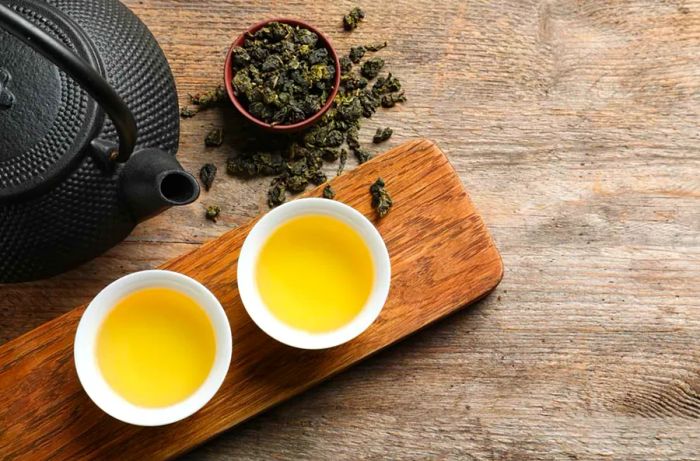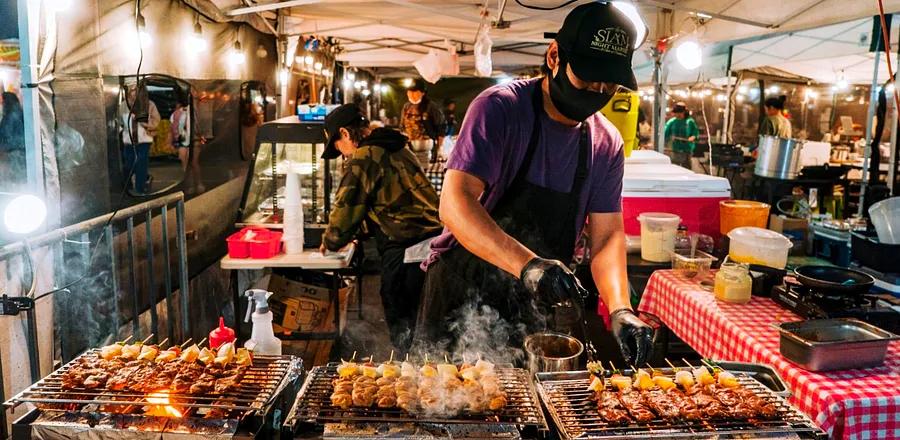An Exploration of Taiwanese Tea Culture

Tea is an inseparable part of Taiwanese life, with tea ceremonies evolving into a significant social custom over the past 400 years. Initially shaped by Chinese tea culture, these traditions were further enriched by Japanese and Western influences, turning tea ceremonies into both a cultural ritual and a means of social interaction that persists today. These ceremonies require various preparations, specific utensils, and emphasize the appreciation of the tea's aroma, flavor, and aesthetic appeal. While respecting these age-old traditions, Taiwanese tea ceremonies have also embraced modernity. Today, numerous contemporary tea shops and cafes showcase innovative tea blends, creative brewing techniques, and unique tea-infused products, offering a wide array of tea varieties.
Distinct Tea Varieties Produced in Taiwan
1. Oolong Tea

Shutterstock.com
Oolong tea holds the title of the most popular tea in Taiwan, and for good reason. This partially oxidized tea offers a broad spectrum of flavors and aromas, varying by type and processing methods. Oolong tea encompasses various types, including Dongding Oolong, celebrated for its light floral scent and subtly sweet taste; Baozhong Tea, known for its grassy aroma paired with a refreshingly sweet flavor; Alishan High Mountain Oolong, which boasts a complex flavor profile featuring notes of fruit, honey, and flowers; and the distinctive Oriental Beauty Oolong, renowned for its unique taste influenced by leafhoppers.
2. Black Tea

Shutterstock.com
While not as prevalent as Oolong tea, Taiwan is also home to some remarkable black teas. Black tea is fully oxidized, resulting in a robust and malty flavor profile. Notable varieties produced in Taiwan include Sun Moon Lake Black Tea, which is celebrated for its smooth, mellow taste with hints of honey and malt, and Black Jade Taiwan tea, known for its smoothness, malty flavor, and sweet aroma.
3. Green Tea

Shutterstock.com
Green tea is the least oxidized variety of tea, allowing it to retain the most subtle flavors compared to other types. Taiwan produces a renowned green tea called Biluochun Green Tea, characterized by its flat, needle-like leaves and its sweet, grassy aroma.
The Art of Ceremony

Shutterstock.com
1. Utensils
To conduct tea ceremonies, several essential utensils are required. These include the Chahai, also known as a fairness pitcher, which is a distinctive tool used in Taiwanese tea practices to ensure that everyone receives tea with a consistent strength from the teapot. Another important item is the clay pot, crafted from Yixing clay, renowned for its heat retention properties. The Gaiwan is a bowl with a lid that is used for steeping tea leaves and pouring tea into the fairness pitcher and individual cups. Teacups, often made of porcelain, are used for drinking, and finally, a strainer is necessary to separate the tea leaves from the brewed tea.
2. The Steps
Before you can enjoy the exquisite and delicate flavors of tea from traditional tea ceremonies, there are three essential steps to follow.
Preparation
The initial preparation involves warming the teapot and heating the cups. Start by pouring boiling water into the teapot, then transfer that water into the Chahai. Next, place the cups on the table and fill them with hot water, which will be discarded once they are adequately warmed. In some Taiwanese tea ceremonies, wooden tweezers may be used to remove the water while keeping the cups on the table.
The second step involves selecting and measuring the tea leaves, where hosts carefully choose the leaves according to the occasion and the experience they wish to create. They then measure the leaves using a small spoon or scoop.
The third step is to place the tea leaves into the Gaiwan.
Brewing
The brewing process begins with the first infusion, where hot water—just below boiling—is poured over the leaves in the Gaiwan. The tea steeps for a brief period, typically between 15 to 30 seconds, depending on the type of tea being used.
The second step involves straining and pouring, which is accomplished by placing the strainer over the Gaiwan and pouring the tea into the fairness pitcher. This technique ensures an even distribution of the tea’s strength across all cups.
The third and final step consists of performing multiple infusions. This varies based on the type of tea and the desired strength. The procedure of pouring hot water, steeping, straining, and transferring to the fairness pitcher can be repeated several times using the same tea leaves.
Enjoying the Tea
Before indulging in the tea, take a moment to appreciate its aroma by inhaling from the sniffer cups. The host will then pour the tea from the fairness pitcher into each guest’s cup. Guests can then take small sips, savoring the visual appeal, aroma, and flavor of the tea.
Journey to Taipei
This concludes our brief exploration of Taiwanese Tea Culture. We’ve covered the historical influences on tea ceremonies, the diverse types of tea produced in Taiwan, and the traditional practices involved. If you're eager to experience these tea ceremonies firsthand and plan to visit Taiwan soon, Mytour is here to assist you with booking flights, accommodations, and other attractions in the area. Not only do they offer competitive prices, but Mytour frequently provides bundles, promotions, and discounts! So, what are you waiting for? Act quickly and secure your bookings now, only with Mytour!

1

2

3

4

5
Evaluation :
5/5